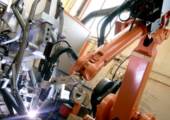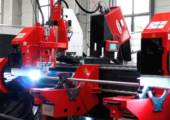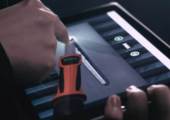-


在线留言
发送您的问题或需求,我们将尽快与您取得联系!
×
-
FAST + RELIABLE
THE LASERHYBRID TWIN IMPROVES THE GAP-BRIDGING ABILITY
07/27/2020
The demands placed on welding technology are particularly high in the automotive industry: end customers expect a premium seam quality and a high surface quality, while manufacturers demand maximum welding speeds and efficient processes. In response to these requirements, Fronius has developed an innovative solution with the LaserHybrid Twin welding process, which combines all of these benefits – even for parts that are difficult to machine, such as axle components.

Higher, faster, further: in virtually no other industry is technical progress as directly perceptible as in the automotive industry. Modern vehicles are high-tech products, which are consistently optimized for performance, efficiency, and design. At the same time, the high cost pressure in international competition requires anufacturers to develop efficient manufacturing solutions.
BENEFITS OF LASER AND GAS SHIELDED ARC WELDING COMBINED
In welding technology, the LaserHybrid welding process has long been successfully established amongst automotive groups and their suppliers. The combination of a laser and conventional MIG welding process brings together the positive features of both worlds: the laser ensures a high speed, deep penetration, and low heat input, while the gas shielded arc welding ensures an outstanding gap-bridging ability and simple seam preparation. This allows different parts to be automatically joined at a speed of up to eight meters per minute in a premium quality – even without complying with the narrow tolerances that are necessary for pure laser welding. This reduces manufacturing costs and increases efficiency in production. The process is also ideal for joining thin metal plates, one of the most common applications in automobile production.
TWO WIRES FOR OPTIMUM RESULTS
To improve the welding performance even further, Fronius has continued to work on the LaserHybrid technology: the LaserHybrid Twin process utilizes a laser beam as well as two independent wire electrodes with different diameters. These are attached in a special welding head with an internally developed wire supply concept. In contrast to conventional Twin processes, only one motor is used to supply both wires to the welding head. This has the benefit that the welding head is much lighter and more compact than in other systems, which improves accessibility to parts and users can use smaller robots with higher dynamics.
The welding power can be flexibly adjusted via variable electrode diameters. The new welding process offers clear improvements in practice: the laser beam ensures a constant penetration depth, while the tandem gas shielded arc welding reliably bridges gaps.
Users benefit from the significantly higher welding speeds, optimal results with fully-reproducible quality, and an enhanced range of applications. For instance, the flange width can be reduced compared to conventional MAG tandem welding. Users particularly benefit from the advantages of the LaserHybrid Twin process when welding lap joints and steel parts – such as in axle production.

3 mm plate, material S355, lap joint, 1 mm gap, laser power 6 KW, welding speed 6 meters/minute
-


 下载
下载
 会员中心
会员中心



 收起
收起























